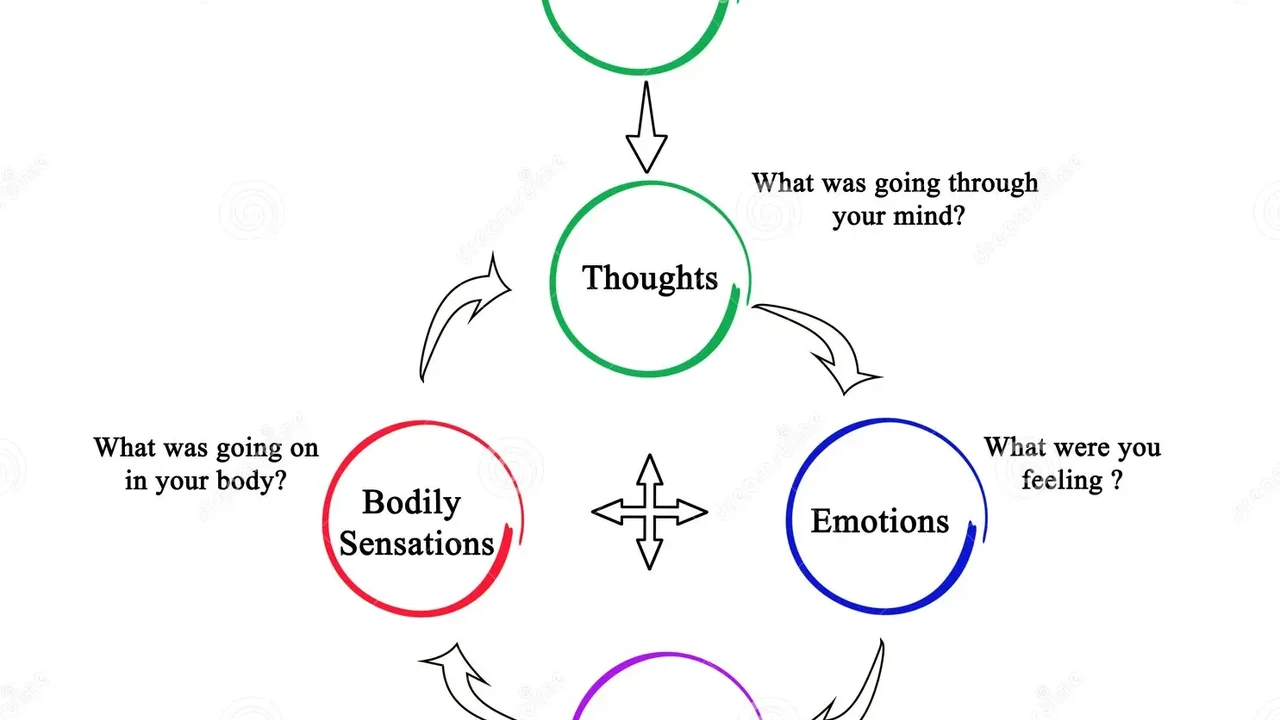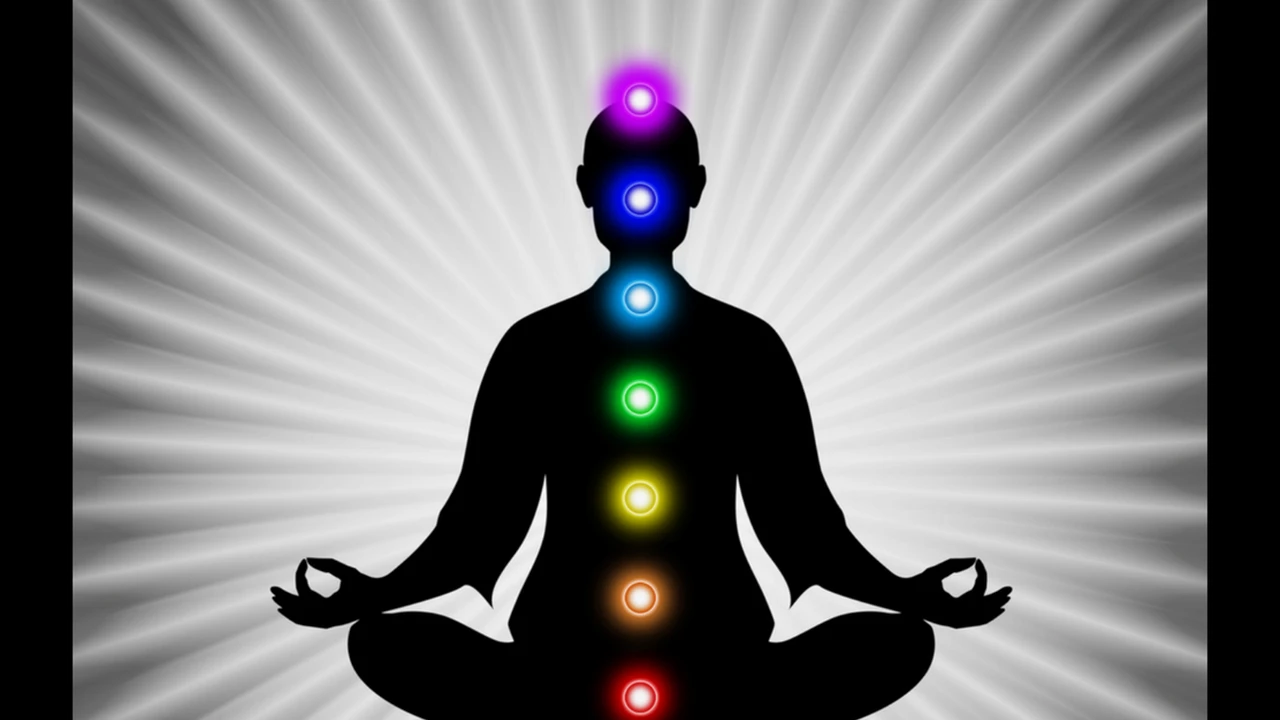Cognitive Behavioral Therapy CBT Explained
Understand Cognitive Behavioral Therapy CBT. Learn how this effective therapy can help manage mental health conditions.

Understand Cognitive Behavioral Therapy (CBT). Learn how this effective therapy can help manage mental health conditions.
Cognitive Behavioral Therapy CBT Explained
Hey there! Ever feel like your thoughts are running the show, sometimes not in a good way? Or maybe you're stuck in patterns of behavior that you just can't seem to break? If so, you're definitely not alone. Many people experience these kinds of challenges, and that's where something called Cognitive Behavioral Therapy, or CBT, often comes into play. It's a really popular and effective type of talk therapy that helps you understand the connection between your thoughts, feelings, and behaviors. Once you get that connection, you can start making changes that lead to a healthier, happier you.
Think of CBT as a practical, hands-on approach to mental well-being. It's not about dwelling on the past, but more about focusing on the here and now, and figuring out how to tackle current problems. It's like learning a new set of skills for your mind, skills that can help you manage stress, anxiety, depression, and a whole host of other mental health conditions. Ready to dive in and see what CBT is all about?
What Exactly is Cognitive Behavioral Therapy CBT Basics
At its core, CBT is based on a pretty simple idea: our thoughts, feelings, and behaviors are all interconnected. And, more importantly, negative or unhelpful thoughts can lead to negative feelings and unhelpful behaviors. The good news? If you can change your thoughts, you can change your feelings and behaviors too!
Let's break it down a bit. 'Cognitive' refers to your thoughts, beliefs, and perceptions. 'Behavioral' refers to your actions and how you react to situations. CBT helps you identify these unhelpful thought patterns and behaviors, and then teaches you strategies to challenge and change them. It's a collaborative process between you and your therapist, where you work together to set goals and develop coping mechanisms.
Unlike some other therapies that might explore childhood experiences in depth, CBT is generally more focused on current issues. It's often a shorter-term therapy, meaning you might see significant progress in a matter of weeks or months, rather than years. But don't get me wrong, the skills you learn in CBT are lifelong tools you can use long after your therapy sessions are over.
How Does CBT Work The Cognitive Model Explained
The magic of CBT lies in what's called the 'cognitive model.' This model suggests that it's not the events themselves that upset us, but rather our interpretation of those events. Let's say you get an email from your boss that sounds a bit critical. One person might think, 'Oh no, I'm going to get fired!' and feel anxious. Another person might think, 'Hmm, I need to clarify this,' and feel curious or determined. The event is the same, but the thoughts and feelings are different.
CBT helps you become aware of these automatic thoughts – those quick, often unconscious thoughts that pop into your head. Many of these thoughts can be distorted or unhelpful, like 'all-or-nothing' thinking (if it's not perfect, it's a failure) or 'catastrophizing' (assuming the worst possible outcome). Once you identify these thoughts, your therapist will guide you through techniques to:
- Identify Cognitive Distortions: Learn to recognize common thinking errors that lead to negative emotions.
- Challenge Negative Thoughts: Question the evidence for your negative thoughts and consider alternative perspectives.
- Develop Balanced Thoughts: Replace unhelpful thoughts with more realistic and positive ones.
- Behavioral Experiments: Test out new behaviors to see if your predictions about them are accurate.
- Problem-Solving Skills: Learn practical strategies to address specific problems in your life.
It's like being a detective for your own mind, gathering evidence and forming more accurate conclusions.
Who Can Benefit From CBT Common Conditions Treated
One of the great things about CBT is its versatility. It's been shown to be effective for a wide range of mental health conditions and life challenges. Here are some of the most common ones:
- Anxiety Disorders: This includes generalized anxiety disorder, panic disorder, social anxiety, and specific phobias. CBT helps you confront your fears and develop coping mechanisms.
- Depression: By challenging negative thought patterns and encouraging behavioral activation (doing things that bring you pleasure or a sense of accomplishment), CBT can significantly reduce depressive symptoms.
- Obsessive-Compulsive Disorder (OCD): Exposure and Response Prevention (ERP), a type of CBT, is highly effective for OCD, helping individuals gradually face their obsessions without engaging in compulsions.
- Post-Traumatic Stress Disorder (PTSD): Trauma-focused CBT helps individuals process traumatic memories and reduce symptoms like flashbacks and avoidance.
- Eating Disorders: CBT can help individuals develop healthier eating patterns and address underlying body image issues.
- Substance Use Disorders: It can help individuals identify triggers, develop coping strategies, and prevent relapse.
- Insomnia: CBT for insomnia (CBT-I) is a highly effective treatment that addresses the thoughts and behaviors that interfere with sleep.
- Chronic Pain: CBT can help individuals manage pain by changing their perception of pain and developing coping strategies.
- Stress Management: Even if you don't have a diagnosed condition, CBT can equip you with excellent tools for managing everyday stress.
Basically, if you're struggling with your thoughts, feelings, or behaviors, CBT is often a great place to start.
CBT Techniques and Exercises Practical Tools for Change
CBT isn't just about talking; it's about doing! Your therapist will introduce you to various techniques and exercises that you'll practice both in sessions and as 'homework' between sessions. Here are a few common ones:
Thought Records Identifying and Challenging Negative Thoughts
This is a cornerstone of CBT. A thought record is a structured way to write down a situation, your automatic thoughts about it, the emotions you felt, and then to challenge those thoughts. It usually involves columns like:
- Situation: What happened?
- Automatic Thoughts: What went through your mind?
- Emotions: How did you feel (and how intensely)?
- Evidence For: What evidence supports this thought?
- Evidence Against: What evidence contradicts this thought?
- Alternative/Balanced Thought: What's a more realistic or helpful way to think about this?
- Outcome: How do you feel now?
There are many apps and printable templates available for thought records. For example, the MoodTools app (free on iOS and Android) includes a thought diary feature that guides you through this process. Another great option is the CBT Thought Diary app (also free on iOS and Android), which is specifically designed for this exercise. These apps make it super easy to track your thoughts on the go and review them with your therapist.
Behavioral Activation Getting Moving for Better Mood
When you're feeling down, it's easy to withdraw and stop doing things you once enjoyed. Behavioral activation encourages you to schedule and engage in activities that are either pleasurable or give you a sense of accomplishment, even if you don't feel like it at first. The idea is that by taking action, you can break the cycle of inactivity and low mood.
Your therapist might help you create an activity schedule. For instance, if you've stopped exercising, you might schedule a 15-minute walk. If you used to enjoy painting, you might schedule 30 minutes to work on a small project. The key is to start small and build up. Apps like Habitica (free with in-app purchases on iOS, Android, and web) gamify habit building and can be a fun way to track your behavioral activation goals. For a more straightforward approach, a simple calendar app like Google Calendar or a dedicated task manager like Todoist (free with premium options) can be very effective for scheduling these activities.
Exposure Therapy Facing Your Fears Gradually
This technique is particularly effective for anxiety disorders and phobias. It involves gradually exposing yourself to the feared object or situation in a safe and controlled environment. The goal is to reduce your anxiety response over time. For example, if you have a fear of public speaking, you might start by speaking in front of a mirror, then to a trusted friend, then a small group, and so on.
Your therapist will help you create a 'fear hierarchy' – a list of situations from least to most anxiety-provoking. Virtual reality (VR) is also emerging as a powerful tool for exposure therapy, allowing individuals to safely confront fears in a simulated environment. While not a product for individual purchase for therapy, VR platforms like Psious are used by clinicians for this purpose. For self-guided exposure, apps like MindShift CBT (free on iOS and Android) offer tools and guidance for facing anxiety-provoking situations.
Relaxation Techniques Calming Your Mind and Body
CBT often incorporates relaxation techniques to help manage the physical symptoms of anxiety and stress. These can include:
- Deep Breathing Exercises: Learning to breathe slowly and deeply can activate your body's relaxation response.
- Progressive Muscle Relaxation (PMR): Tensing and then relaxing different muscle groups in your body to release tension.
- Mindfulness Meditation: Focusing on the present moment without judgment.
There are tons of great apps for this! Calm and Headspace (both subscription-based with free trials on iOS and Android) are incredibly popular for guided meditations and sleep stories. For PMR, apps like Relax Melodies (free with in-app purchases on iOS and Android) often include guided exercises. Even YouTube has a wealth of free guided relaxation videos.
Problem-Solving Skills Tackling Life's Challenges
CBT equips you with a structured approach to problem-solving. This usually involves:
- Defining the Problem: Clearly identifying what the issue is.
- Brainstorming Solutions: Coming up with as many possible solutions as you can, no matter how silly they seem.
- Evaluating Solutions: Weighing the pros and cons of each solution.
- Choosing and Implementing a Solution: Selecting the best option and putting it into action.
- Reviewing the Outcome: Assessing whether the solution worked and adjusting if necessary.
While there aren't specific 'problem-solving apps' in the same way as meditation apps, general productivity and note-taking apps can be very helpful. Evernote or Microsoft OneNote (both free with premium options on various platforms) can be used to structure your problem-solving steps, list pros and cons, and track your progress. For a more visual approach, mind-mapping tools like MindMeister (free with limited features) can help you brainstorm solutions effectively.
Finding a CBT Therapist What to Look For
So, you're interested in trying CBT. Great! The next step is finding a qualified therapist. Here's what to keep in mind:
- Qualifications: Look for licensed mental health professionals such as psychologists, psychiatrists, social workers, or counselors who specialize in CBT. They should have specific training and experience in this modality.
- Experience: Ask about their experience treating your specific concerns. While CBT is broad, a therapist with experience in, say, anxiety disorders, might be a better fit if that's your primary issue.
- Therapeutic Alliance: This is super important! You need to feel comfortable and understood by your therapist. A good rapport is crucial for effective therapy. Don't be afraid to 'shop around' and have initial consultations with a few different therapists.
- Online vs. In-Person: Telehealth has made therapy more accessible than ever. Online CBT can be just as effective as in-person sessions for many people. Platforms like BetterHelp and Talkspace (both subscription-based) connect you with licensed therapists, often specializing in CBT, and offer flexible scheduling. For in-person options, check directories like the Association for Behavioral and Cognitive Therapies (ABCT) or the American Psychological Association (APA).
- Cost and Insurance: Therapy can be an investment. In the US, sessions can range from $75 to $200+ per hour, depending on location and therapist experience. Check if your insurance covers mental health services and if the therapist is in-network. Many therapists also offer sliding scale fees based on income.
Remember, finding the right therapist is a personal journey. Don't settle until you find someone you feel confident and comfortable working with.
CBT vs Other Therapies A Quick Comparison
You might be wondering how CBT stacks up against other types of therapy. While many therapies share common goals, their approaches can differ significantly:
- CBT vs. Psychodynamic Therapy: Psychodynamic therapy often delves deeply into past experiences and unconscious processes to understand current behavior. CBT, on the other hand, is more present-focused and aims to change current thought patterns and behaviors directly.
- CBT vs. Dialectical Behavior Therapy (DBT): DBT is actually a specialized form of CBT, often used for more complex conditions like Borderline Personality Disorder. It incorporates mindfulness, emotional regulation, distress tolerance, and interpersonal effectiveness skills, building upon CBT's core principles.
- CBT vs. Humanistic Therapy: Humanistic therapies (like client-centered therapy) emphasize self-actualization, personal growth, and the client's inherent goodness. While CBT also aims for growth, it's more structured and directive in its approach to problem-solving.
No single therapy is 'best' for everyone. The most effective therapy is often the one that best fits your needs, personality, and the specific challenges you're facing. Your doctor or a mental health professional can help you determine if CBT is the right fit for you.
Self-Help CBT Resources Tools for Your Journey
While working with a therapist is often the most effective way to engage in CBT, there are also many excellent self-help resources available. These can be a great starting point, or a way to supplement your therapy sessions.
Books Recommended Reads for CBT Principles
Reading can be a powerful way to understand CBT concepts and apply them to your life. Here are a few highly recommended books:
- 'Feeling Good: The New Mood Therapy' by David D. Burns, M.D.: This is a classic and often considered the bible of self-help CBT. Dr. Burns breaks down cognitive distortions and provides practical exercises to challenge negative thoughts. It's very accessible and empowering. You can find it on Amazon for around $15-$20 for a paperback.
- 'Mind Over Mood: Change How You Feel by Changing the Way You Think' by Dennis Greenberger, Ph.D., and Christine A. Padesky, Ph.D.: This workbook-style book is fantastic for hands-on learning. It guides you through CBT techniques with clear explanations and worksheets. It's a bit more structured than 'Feeling Good' and is often used by therapists as a companion for clients. Expect to pay around $20-$25.
- 'The Anxiety and Phobia Workbook' by Edmund J. Bourne, Ph.D.: While not exclusively CBT, this book incorporates many CBT principles and is incredibly comprehensive for anyone dealing with anxiety, panic attacks, or phobias. It offers a wide range of techniques and exercises. This one typically costs $20-$25.
Apps Digital Tools for CBT Practice
As mentioned earlier, apps can be a fantastic way to integrate CBT into your daily life. Here's a recap and a few more:
- MoodTools (Free, iOS & Android): Offers a thought diary, safety plan, and educational resources for depression.
- CBT Thought Diary (Free, iOS & Android): Specifically designed for thought records, helping you identify and challenge negative thinking patterns.
- MindShift CBT (Free, iOS & Android): Developed by Anxiety Canada, this app uses CBT strategies to help users cope with anxiety. It includes tools for thought challenging, relaxation, and facing fears.
- Woebot (Free, iOS & Android): An AI-powered chatbot that delivers CBT techniques in a conversational format. It's like having a mini-therapist in your pocket, offering daily check-ins and exercises.
- Sanvello (Free with premium features, iOS & Android): Offers CBT tools, guided meditations, mood tracking, and peer support. The premium version unlocks more features and can be covered by some insurance plans.
When choosing an app, look for those developed by mental health professionals or reputable organizations. Always remember that apps are a supplement, not a replacement, for professional therapy if you're dealing with significant mental health challenges.
The Future of CBT Innovations and Accessibility
CBT is constantly evolving, and the future looks bright for even greater accessibility and effectiveness. Here are a few trends:
- Digital CBT (dCBT): This includes the apps and online platforms we've discussed, making therapy more convenient and affordable for many. Research continues to show its effectiveness.
- Virtual Reality (VR) CBT: As mentioned with exposure therapy, VR is being used to create immersive, controlled environments for treating phobias, PTSD, and social anxiety. Imagine safely practicing public speaking in a virtual auditorium!
- Personalized CBT: Advances in data science and AI might allow for even more personalized CBT interventions, tailoring techniques to an individual's unique thought patterns and needs.
- Integration with Wearables: Imagine your smartwatch detecting rising stress levels and prompting you with a CBT-based breathing exercise. This kind of integration is on the horizon.
The goal is to make effective mental health support available to more people, breaking down barriers like cost, stigma, and geographical location.
So, there you have it! Cognitive Behavioral Therapy is a powerful, evidence-based approach that can truly transform how you think, feel, and behave. It's about empowering you with the tools to become your own therapist, to navigate life's ups and downs with greater resilience and well-being. If you're curious, don't hesitate to explore these resources or reach out to a mental health professional. Your mind will thank you!
:max_bytes(150000):strip_icc()/277019-baked-pork-chops-with-cream-of-mushroom-soup-DDMFS-beauty-4x3-BG-7505-5762b731cf30447d9cbbbbbf387beafa.jpg)






